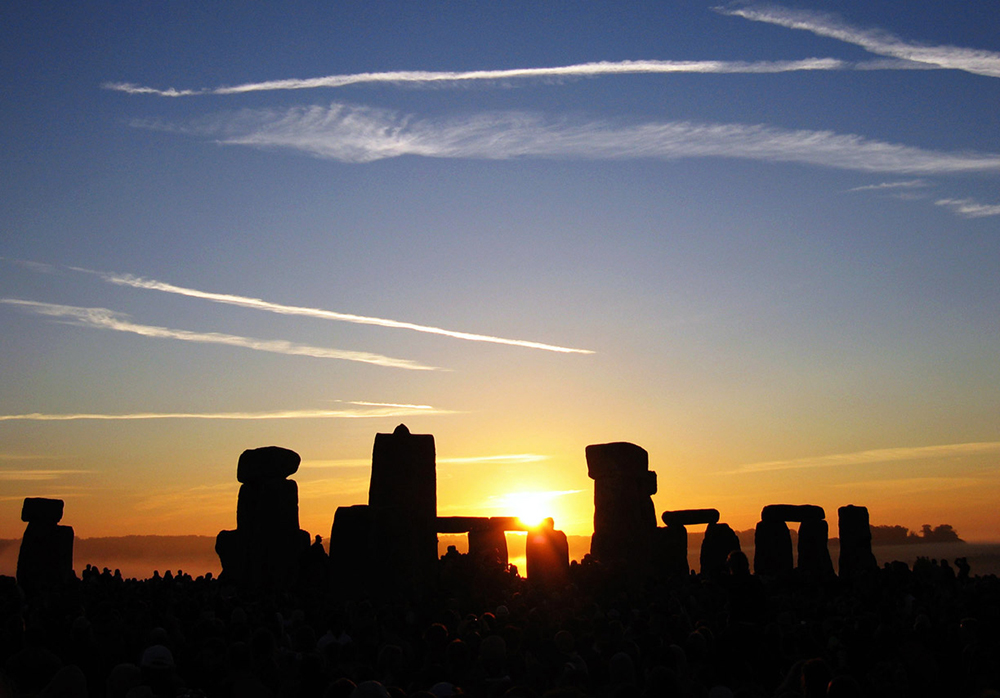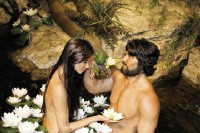June 20th is the official start of summer, with the summer solstice happening at 3:50 p.m. that day. This solstice marks the longest day of the year — when the number of hours of daylight are at their maximum, and the number of hours of night are at their minimum.
The movement of celestial bodies has fascinated humans for millennia. Ancient cultures knew that the sun’s path across the sky, the length of daylight, and the location of the sunrise and sunset all shifted in a regular way throughout the year. They built monuments, such as the ones at Stonehenge in England and at Machu Picchu in Peru, to follow the sun’s yearly progress. Newgrange in Ireland was constructed to align with the winter solstice and Angkor Wat in Cambodia aligns with the sun on the spring equinox.
Many ancient cultures created holy days and festivals to mark the movement of the heavens. Our ancient ancestors often celebrated the solstices and equinoxes, honored them as holy days, and set them aside for religious observances.
Today, we know the solstice is caused by Earth’s tilted axis and by its orbital motion around the sun. The Earth doesn’t orbit upright with respect to the plane of our orbit around the sun. Instead, our world is tilted on its axis by 23.5 degrees. Through the year, this tilt causes Earth’s Northern and Southern hemispheres to trade places in receiving the sun’s light and warmth most directly. It’s Earth’s tilt — not our distance from the sun — that causes winter and summer. In fact, our planet is closest to the sun in January and farthest from the sun in July, during the Northern Hemisphere’s summer.
But does understanding the science and reason behind the summer solstice (or any solstice or equinox) take away from the awe or reverence we have for these sacred times? For some people it may. Knowing the mechanics behind a phenomenon might make that occurrence less mystical for people. It may no longer seem special just because we understand what is happening and why.
But it doesn’t have to be that way. There can be something powerful in taking part in the same celebrations that our ancestors took part in. It doesn’t mean we are doing the same things our ancestors may have done to honor the solstice. But just continuing the practice of recognizing the day, or the moment, helps create a tradition that will continue to live and evolve through you and after you.
It’s the 21st century. We know that the Earth rotates around the sun in our solar system. And our solar system is just one of millions in our galaxy of the Milky Way. But does this knowledge make phenomena such as the summer solstice any less magical? Not to me. In fact, sometimes it makes it more magical.
Regardless of your spiritual beliefs or tradition, it is possible to the look at this intricate system that is our world and be amazed. Whether you believe a higher power created it or the Earth and humans are an accident of science and evolution, it is still amazing how well-balanced and special our world is. And it is just a fragment of dust in comparison to what’s out there beyond the stars. How is that not awe-inspiring?
In spiritual traditions, the summer solstice is often referred to as Midsummer. Although it is officially the start of summer, for most of us summer began months ago. It is starting to get hot, the kids only have a couple of months left before school starts back for the fall, and we’re likely looking forward to cooler weather. But the summer solstice is also the end of the light half of the year. Since the previous winter solstice, the days have been getting longer and the nights shorter. The summer solstice is the longest day of the year but going forward now, the sun will set a little earlier each night. From the summer solstice until the winter solstice, we are in the dark half of the year. Enjoy your summer with intention.
Emily Guenther is a co-owner of The Broom Closet metaphysical shop. She is a Memphis native, professional tarot reader, ordained Pagan clergy, and dog mom.

 Creation Museum
Creation Museum